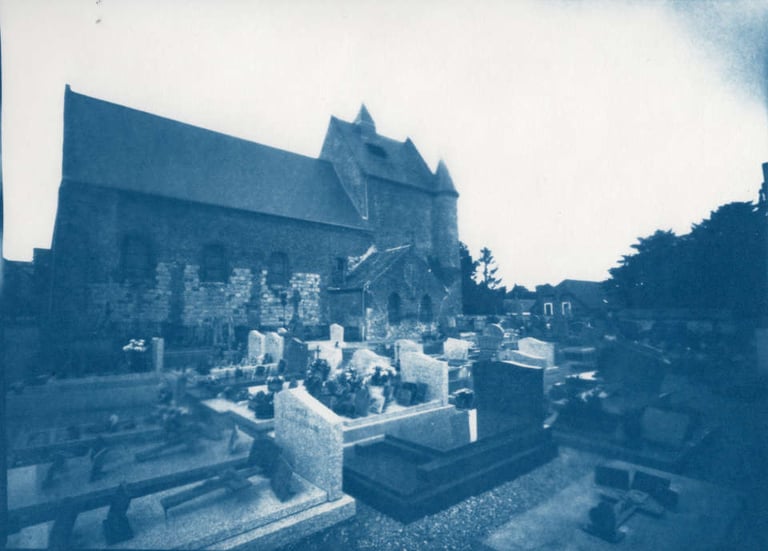Cyanotypes and Cyanopés
Let's start with cyanotypes. What is this?
It is an old photographic process, so it has its place on this site. To find out more I refer you to the Wikipedia page.
Instead of using silver salts this process uses ferric salts and gives negative images not in black and white like a silver print but in blue and white, hence its name. If you are allergic to the color cyan there are simple ways to tint the image, simply with tea for example.
A big advantage over the film process is that you don't need a darkroom to prepare your sensitive surface, a room in the shade or even lit by an LED lamp is sufficient. You work with light without fumbling. The cyanotype is sensitive to UV-A light where the classic photo is sensitive to the entire light spectrum. Photo paper is insensitive to a certain range of red light.
Another advantage is cost. If you don't want to play the apprentice chemist (the products are very non-toxic and easily available) there are ready-made kits which contain the 2 basic solutions which you just need to mix in equal parts to obtain the photosensitive solution. Generally a kit of 2 x 300 ml costs around 30 euros and allows you to prepare at least 300 sheets in A4 format. Once the solution is prepared, simply place it in an even layer on the paper using a paintbrush or sponge brush of your choice. Two cross passes and the paper is ready to dry and use. And all this by seeing what you do. For those who are more impervious to any manipulation, there are already sensitized papers today, often called "solar paper" or "solar photo paper".
Yet another advantage? It simply develops in water. A few minutes in water and the image takes shape. The final result will be visible after a dozen hours. If you are a little interested in the process you will easily find recipes to get the final result more quickly, I will give you a hint: a little hydrogen peroxide.
Even more? You decide the size of your cyanotype. A6, A5, A4, A3, 1 meter x 1 meter, even bigger? Find the appropriate paper and impregnate it. If you use the cyanotype for contact printing, provide a glass plate at least the size of the sensitized paper and that's it.
Oh, I almost forgot, it also works on any surface as long as it absorbs the photosensitive solution. Wood, fabric, cardboard etc. For non-absorbent surfaces you will need to prepare the surface but there are some very beautiful cyanotypes on glass.
The lifetime of your cyanotypes? The cyanotypes made in the 1850s are still in perfect condition, it will outlast you.
A disadvantage all the same, the exposure time is enormous compared to film photography. For a photogram allow about ten minutes, for a contact print from a negative allow 1/4 hour and for a contact print from a paper negative allow a good 3 hours in full sun, at least in my yard located in the north of France.
Another disadvantage is that you will have to find your own way to obtain successful cyanotypes. In addition to the sunshine which differs from day to day, each home has different specifications in terms of water. Some have more or less acidic water, which influences preparation and development. Another notable influence: the paper used. Generally I prefer smooth papers although sometimes textured paper can be aesthetically pleasing. The important thing is that the paper can withstand being soaked in water for at least 5 minutes. Skip the printer paper and go straight to paper of at least 190 g/m. Multi-techniques paper is perfect. Another solution is watercolor paper, stronger, 250 or 300 g/m. Each paper has a different reaction to cyanotype, you will need to test and adjust for yourself.
Be careful though, if you splash photosensitive preparation on your skin or your clothes it will form stains that are not necessarily desirable and are indelible. Don't prepare your cyanotypes in a 3-piece suit unless you absolutely want to "decorate" it.
And cyanopé kesako?
It is also cyanotype but by contact printing of negative paper exposed in a pinhole camera.
The photo is taken with a pinhole camera on photo paper, it is then developed like any photo paper and produces a negative. It is this negative which is used as a contact print on a sheet sensitized with cyanotype. For a longer explanation of why this term I invite you to consult this page.
Concretely it gives results that I find pleasant:

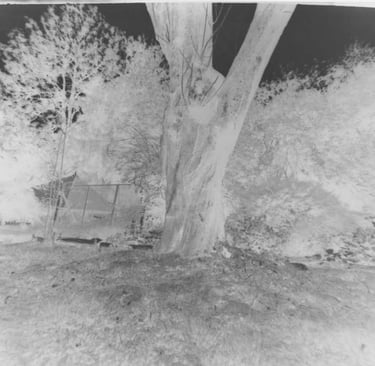
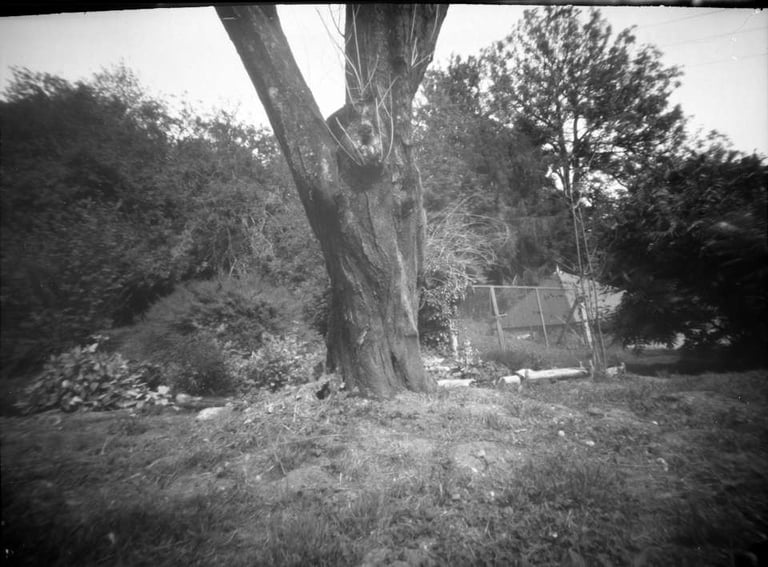

Negative on paper
Positive from photo paper scan

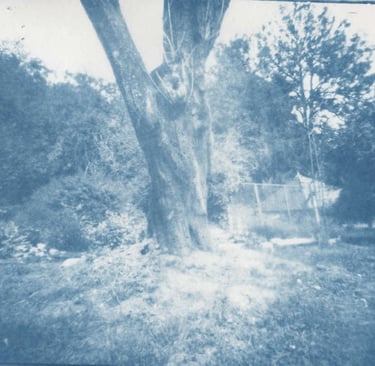
The cyanopé
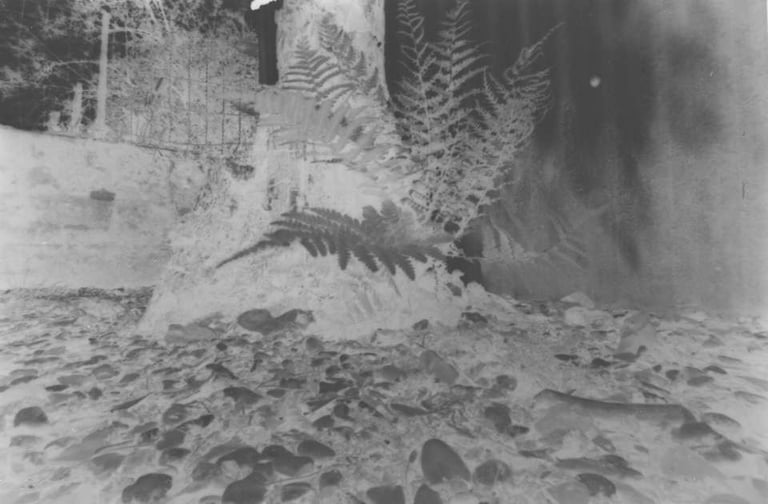



Negative on paper
Positive from photo paper scan

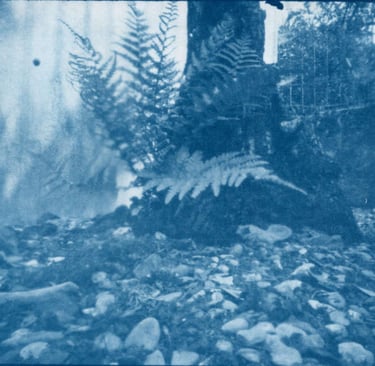
The cyanopé
Negative on paper
Positive from photo paper scan
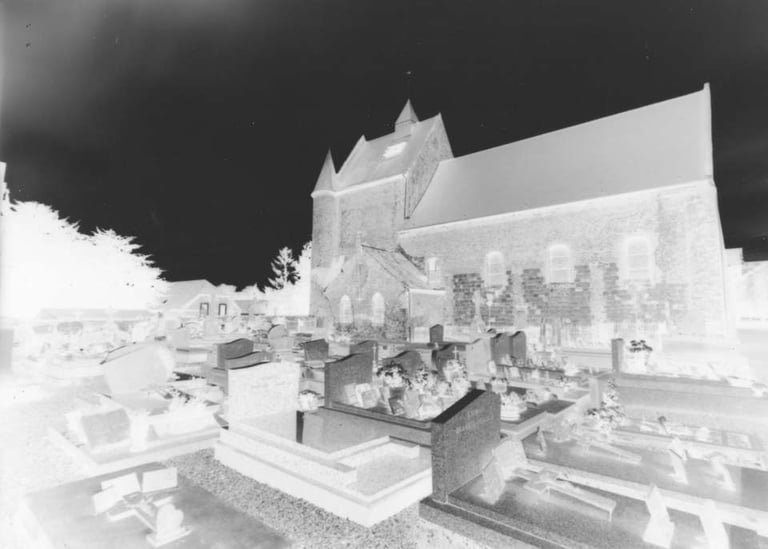

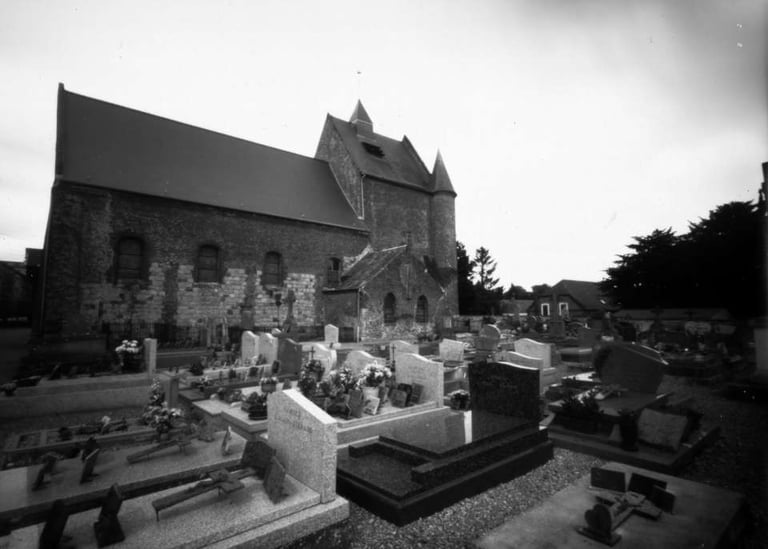

The cyanopé
